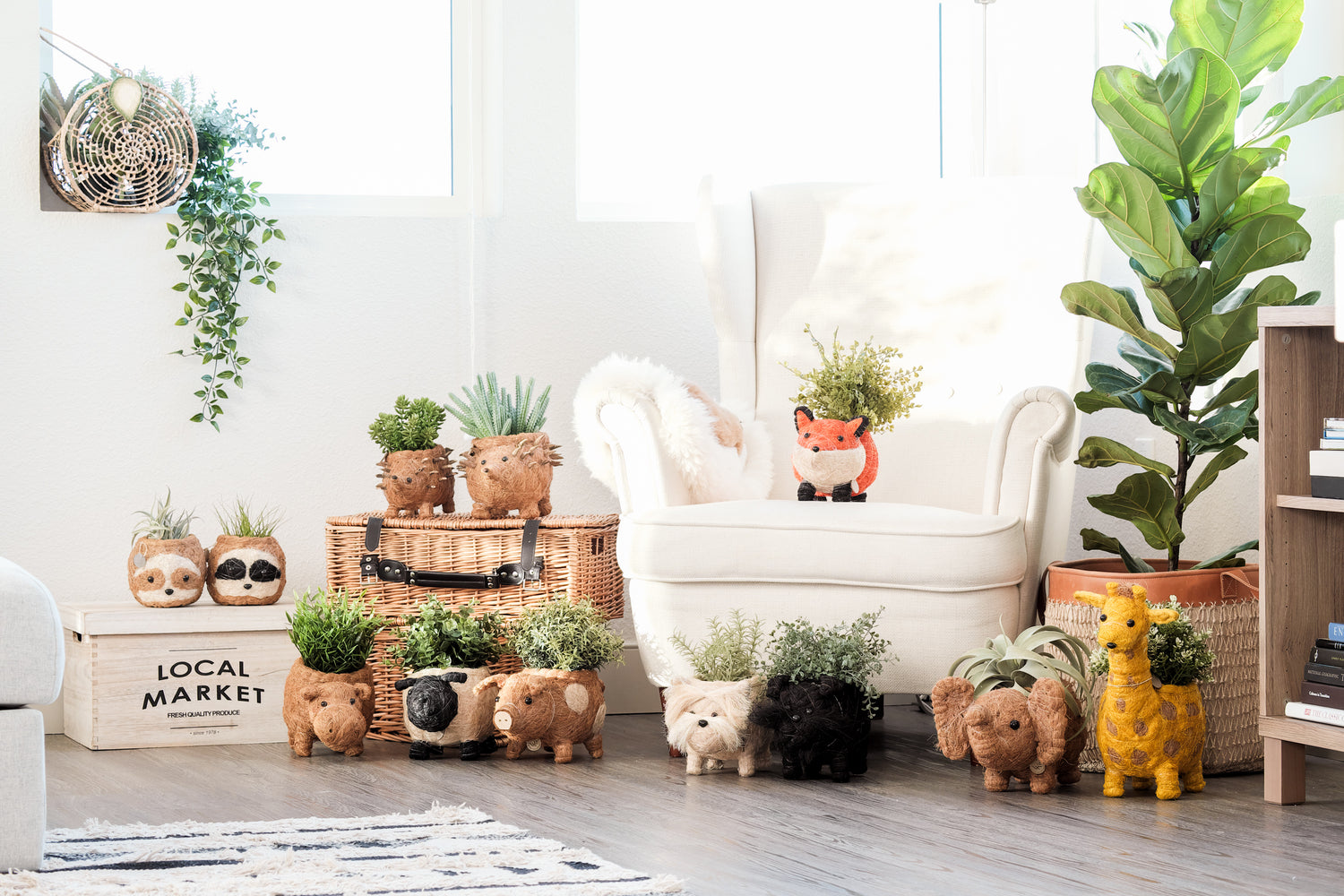Scouting for materials and products can get overwhelming.
When we visit communities and see all the beautiful pieces they make, we often feel it doesn’t even matter what we choose, any one of them would find a market that will want to take them home. We wish we could take them all on!Occasionally though, a rare gem will ever so slightly peek out from the crowd. That was quite literally the case with Hector, the little hedgehog planter peeking out at us from the pile of woven knick knacks. It was a moment of serendipity - we felt a whiff of joy and we couldn’t help but smile.
 We had to learn more, and the more we learned, the more we got excited. He’s made of coconut coir (that’s pronounced ‘coyer’, which Hector could very well have been!), an agricultural byproduct of the area’s coconut trade that turns out to be amazing for plants. It’s durable, rot-resistant, and lightweight, and it lets air in and retains just the right amount of moisture. As far as upcycling goes, making this stuff into a planter just makes so much sense!
We had to learn more, and the more we learned, the more we got excited. He’s made of coconut coir (that’s pronounced ‘coyer’, which Hector could very well have been!), an agricultural byproduct of the area’s coconut trade that turns out to be amazing for plants. It’s durable, rot-resistant, and lightweight, and it lets air in and retains just the right amount of moisture. As far as upcycling goes, making this stuff into a planter just makes so much sense!We had the privilege of meeting the fair trade community that makes them, and the surprises just kept coming. As we watched the weavers expertly winding and wrapping the coir in swift, smooth motions, one thing was missing: there were no molds or templates. They were doing it all from memory! Like children watching a master sculptor we stood in awe as they turned twig wireframe basket into amorphous brown ball and gradually into hedgehog or pig or sheep. Between that and listening to their enriching stories about farm life, respect for nature, and family, it was surreal.
We feel tremendously honored to be able to feature Hector the hedgehog and all his farm friends as part of our collection. Seeing the giggles and smiles from people is incredibly rewarding, and something we're always excited to take back to the makers. We hope they make you smile too!
Read on to learn more about coco coir:
What is Coco Coir?
Coco coir, is a fiber-rich, renewable, and eco-friendly material found between the hard, inner shell and the external coat of a coconut. It is a rot-resistant, durable, and lightweight material - usually a byproduct of harvesting coconuts for food.

1) White Coco Coir - harvested from coconuts that are not yet ripe, and usually comes in light brown or white. The white coco coir variety is smoother and finer than brown coco coir, but weaker. To strengthen it, these are spun to make yarn to be used in the creation of mats or ropes.
2) Brown Coco Coir - harvested from fully mature and ripened coconuts. They are thick, strong, abrasion-resistant fibers typically used in mats, sacking, and brushes.
How are they processed?
We use brown coco coir from mature coconuts that have ripened and fallen from the tree. To de-husk, the fibrous layer of the fruit is separated from the shell manually with the use of a sharp instrument. A skilled husker can manually split and peel about 2,000 coconuts per day. The shells are then soaked in nets in a slow-moving body of water to swell and soften. Long bristle fibers are separated from the shorter fibres underneath the skin of the nut, in a process known as “wet-milling.” To remove dirt, the fibers are sifted and then dried in the sun and packed into bales.
As soon as our artisans get their hands on these bales, they work their magic.
And Hector (and all his friends) are born, ready to find a warm, welcoming home - whichever part of the world it may be. :)



